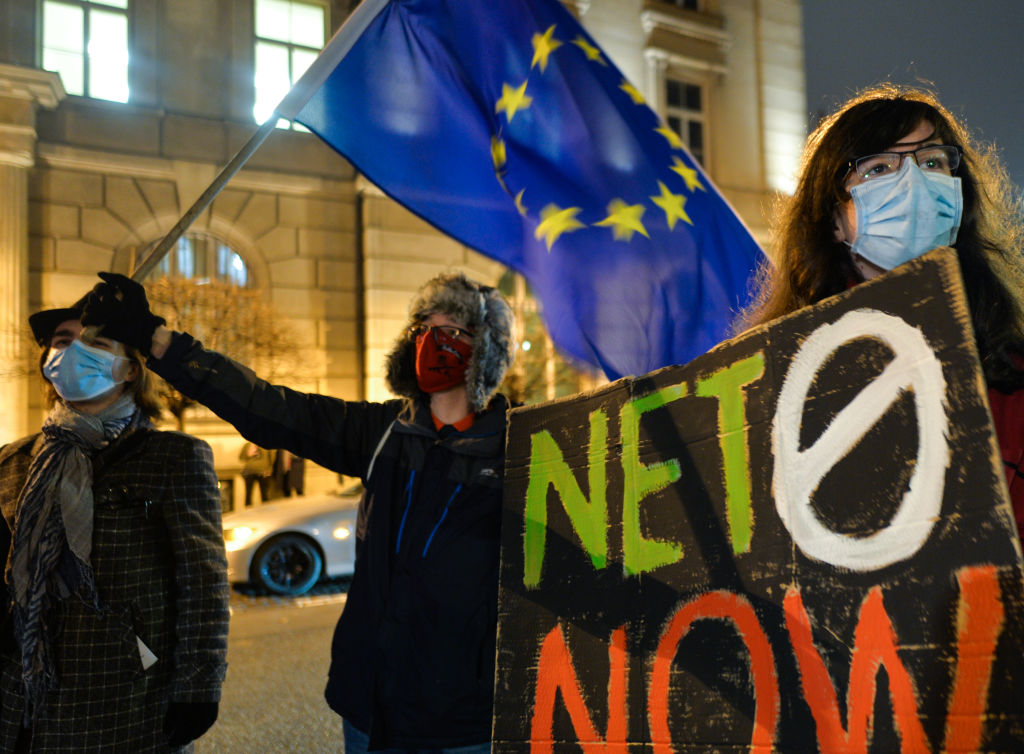The EU’s proposal to cut its carbon footprint to a tenth of 1990 levels is facing resistance, torn between concerns over Europe’s industrial future and its global credibility as a climate leader.
For decades, climate action came easily. In the 30 years to 2020, the EU set itself the goal of reducing greenhouse gas emissions by just 20% – a target met comfortably, helped by de-industrialisation and the global financial crisis.
But worldwide emissions kept rising inexorably, and with climate breakdown manifesting too close to home to ignore, 2019’s ‘green wave’ returned an environmentally minded majority to the European Parliament.
It also pushed Ursula von der Leyen, who took over as Commission president late that year, to place a new Green Deal at the centre of her policy agenda. The result: a legally binding target to reach net-zero by 2050.
That meant more climate action was needed, with much deeper and much faster cuts to carbon emissions. For a new 2030 target, lawmakers agreed to cut emissions by more than twice as much in the current decade as Europe had managed up to 2020.
And the EU is actually on track to meet the target.
Coincidentally, the first half of the decade has seen the EU’s economy stagnate, energy prices soar, industry move away, and pundits warn of a century of humiliation ahead.
Not all of this can be blamed on climate policy, of course, but it often is. And with the 2024 elections swinging to the right, von der Leyen’s second Commission has found itself under pressure to backtrack.
A future-proof target
At the same time, she returned to office on a promise to follow the advice of EU climate scientists and propose an interim emissions reduction target of 90% by 2040.
If the 2020s were the easy part, with CO₂ cuts achieved mainly by switching electricity generation away from coal towards renewable energy, then progress towards the 2030 target marks a serious increase in effort. The next target could be tougher still.
Climate Commissioner Wopke Hoekstra broke a long-standing taboo by mooting the need for “lifestyle changes including dietary changes, changes in mobility and increased resource efficiency” to achieve the next step on the road to climate neutrality.
That could mean eating less beef, switching or ditching petrol cars, ramping up the price industry must pay for emitting CO₂ into the atmosphere and extending the principle to households – as well as, controversially, outsourcing climate action to developing countries.
Some argue – often ignoring other factors such as the Covid pandemic, structural issues with the eurozone, and war – that Europe’s current economic malaise is due to five years of high-ambition climate action.
How much worse could things get in the remaining quarter-century to the net-zero deadline, they ask. Such sentiment explains, at least in part, a call by a 15-country group convened in the Polish embassy in Brussels last week to take more time to consider the 2040 proposal.
Some EU countries, notably France, are looking for political concessions; others like Poland, Czechia, and Italy fundamentally reject the 90% level of ambition proposed by the EU executive.
Countdown to COP30
On the other side of the argument is Denmark, which is short of firm allies but can count on Ireland and the Nordic countries, and wants to see the 90% target adopted as quickly as possible.
As current holder of the rotating EU Council presidency, it is Copenhagen’s job to forge agreement among its 26 fellow member states. Its negotiators are under immense time pressure.
In November, the COP30 climate conference will take place in Brazil – ten years after the historic Paris Agreement in which world leaders vowed to address global temperature rise before climate breakdown becomes an existential threat.
All parties to the agreement are expected to pledge a contribution to the global effort in the form of a 2035 climate target – in time for the UN General Assembly in New York later this month.
But coming up with this “nationally determined contribution” (NDC), unlike the 2040 goal, has to be agreed unanimously by all EU governments. This is impossible without first agreeing to the 2040 goal, the Danes argue.
Hence their urgency and fervent hope of clinching a deal at a summit of environment ministers on 18 September.
Last-minute showdown
So a lot is riding on a gathering of diplomats, behind closed doors in the EU Council headquarters in Brussels on Friday.
It is here where national delegations will haggle over Copenhagen’s eleventh-hour compromise proposal that expands the scope for outsourcing emissions reductions to the developing world, and even offers the option of easing the target if EU industry starts to suffer.
An attractive proposition, given that reducing CO₂ in Germany could be 17 times more expensive than in Indonesia, a new analysis by the think tank Tony Blair Institute suggests.
Whatever you think of TBI’s maths, it is undeniable that it is cheaper to pay African countries to plant trees than to convert a Swedish steel plant to run on green hydrogen – but it remains to be seen if this sweetener is to the taste of a majority of EU governments.
One way or another, we should know by Monday whether Denmark has scored a significant diplomatic success – or whether EU negotiators are at risk of heading to COP30 in Brazil empty-handed.
